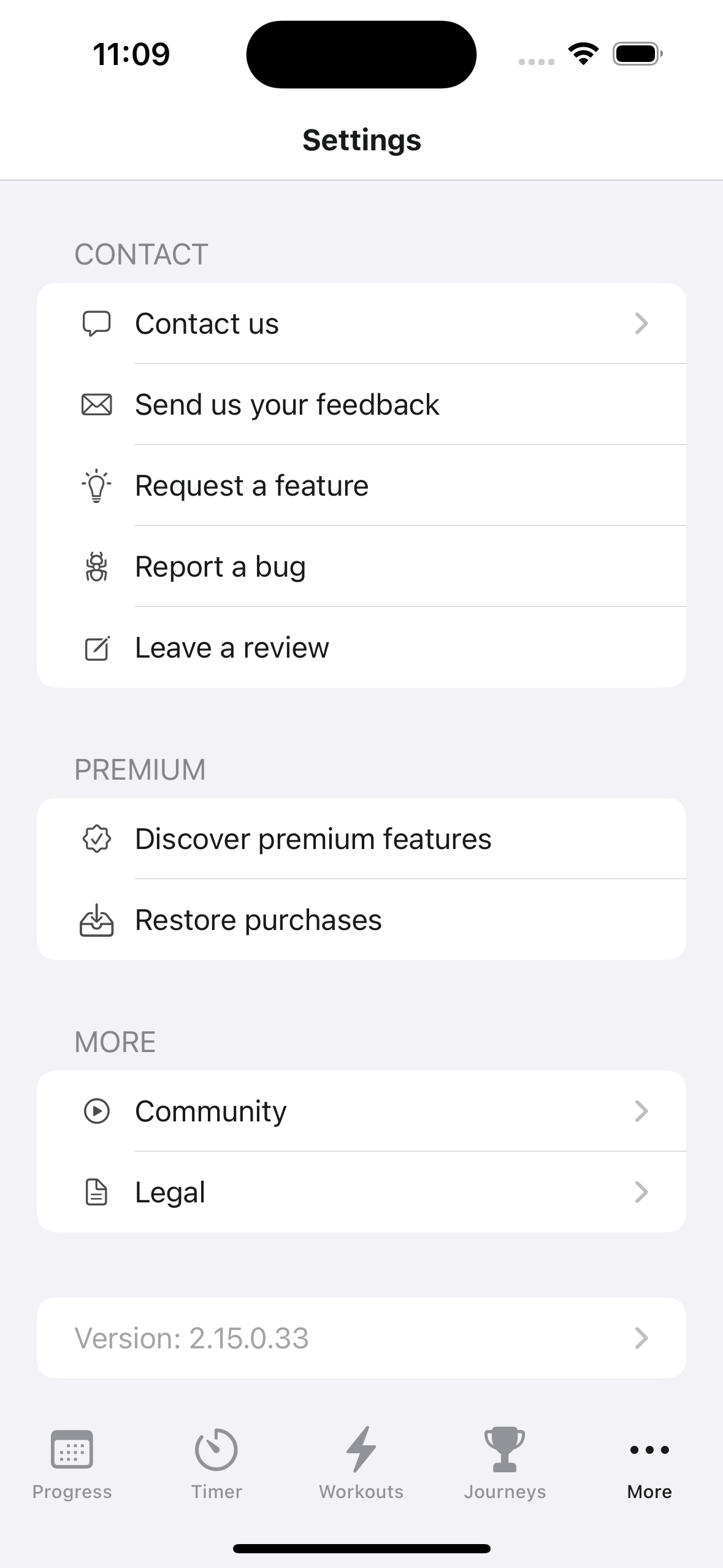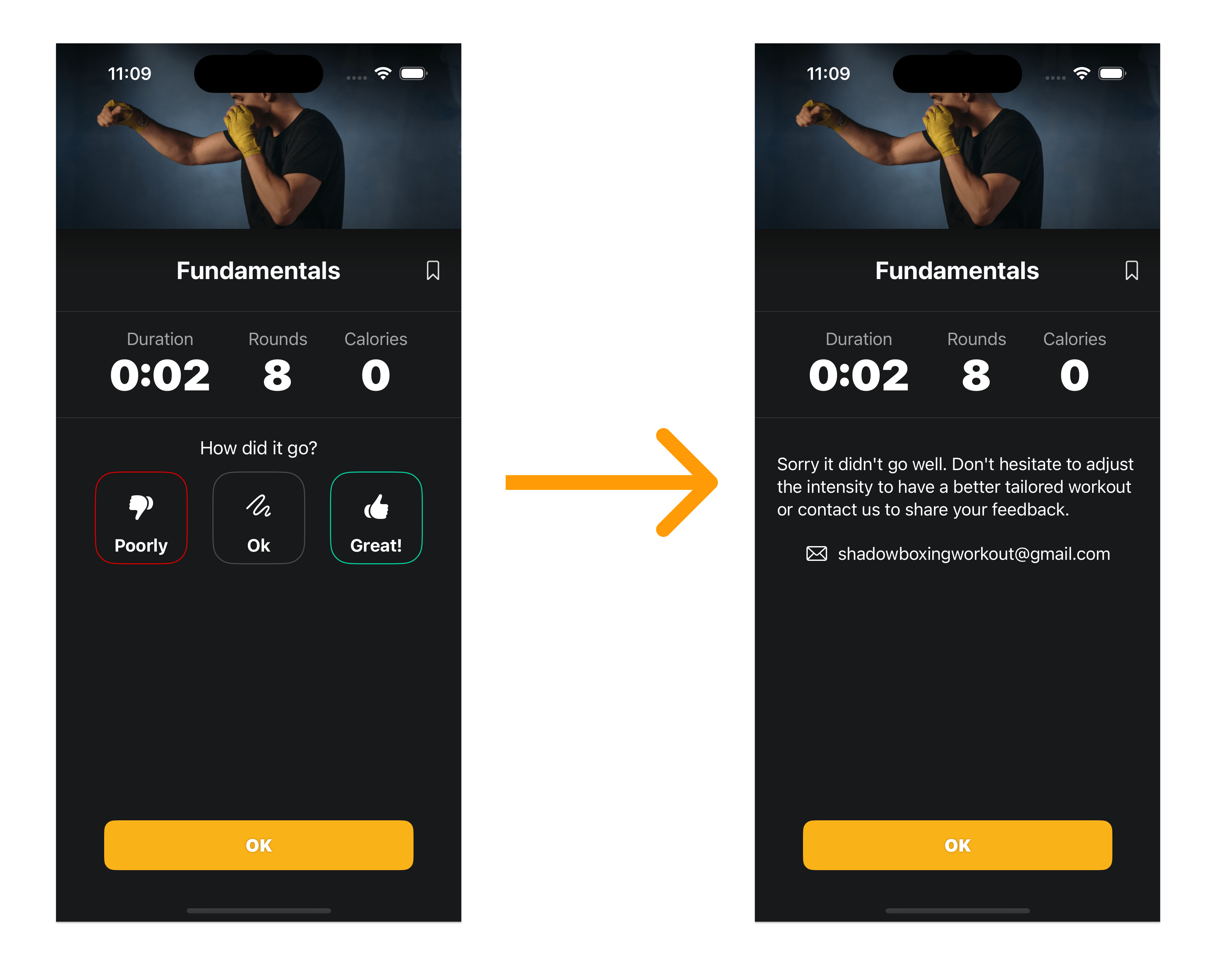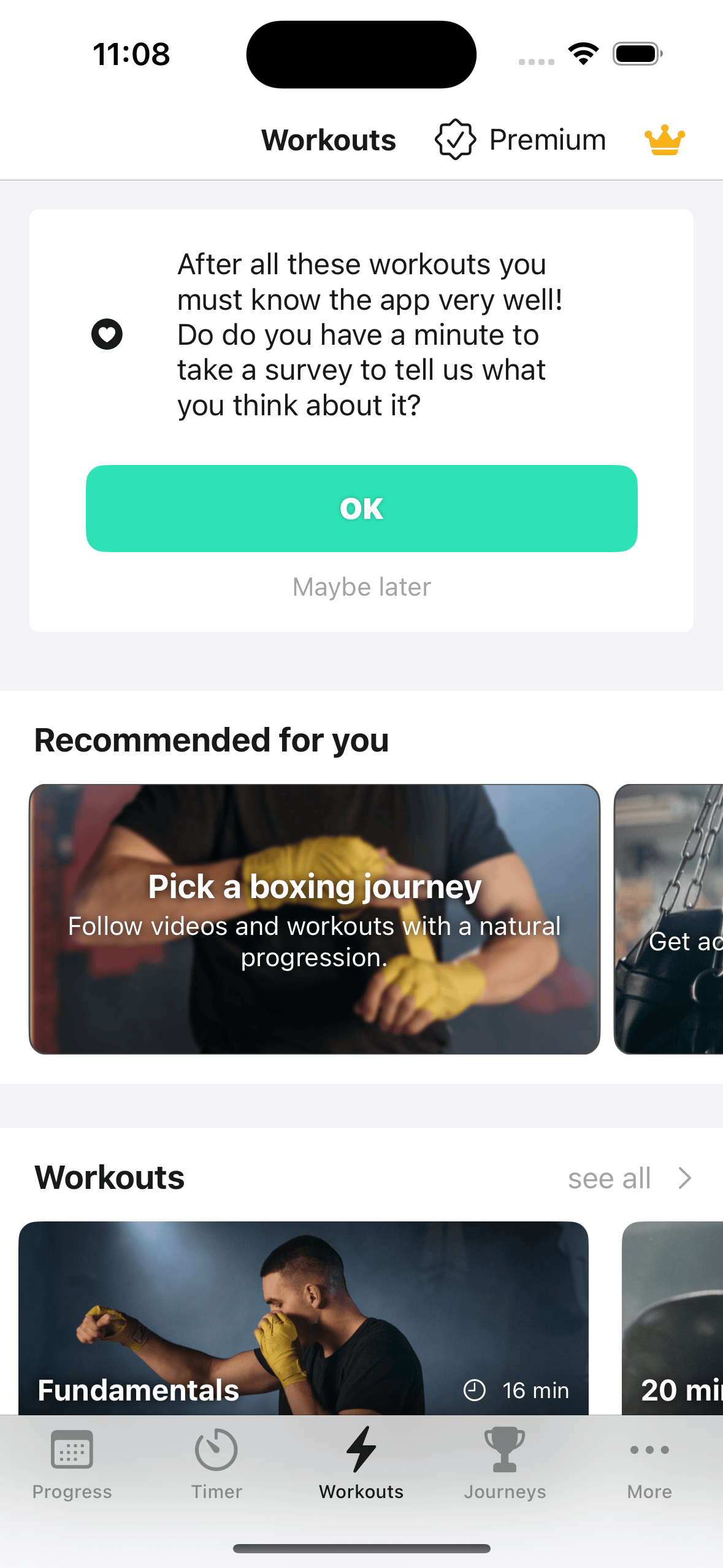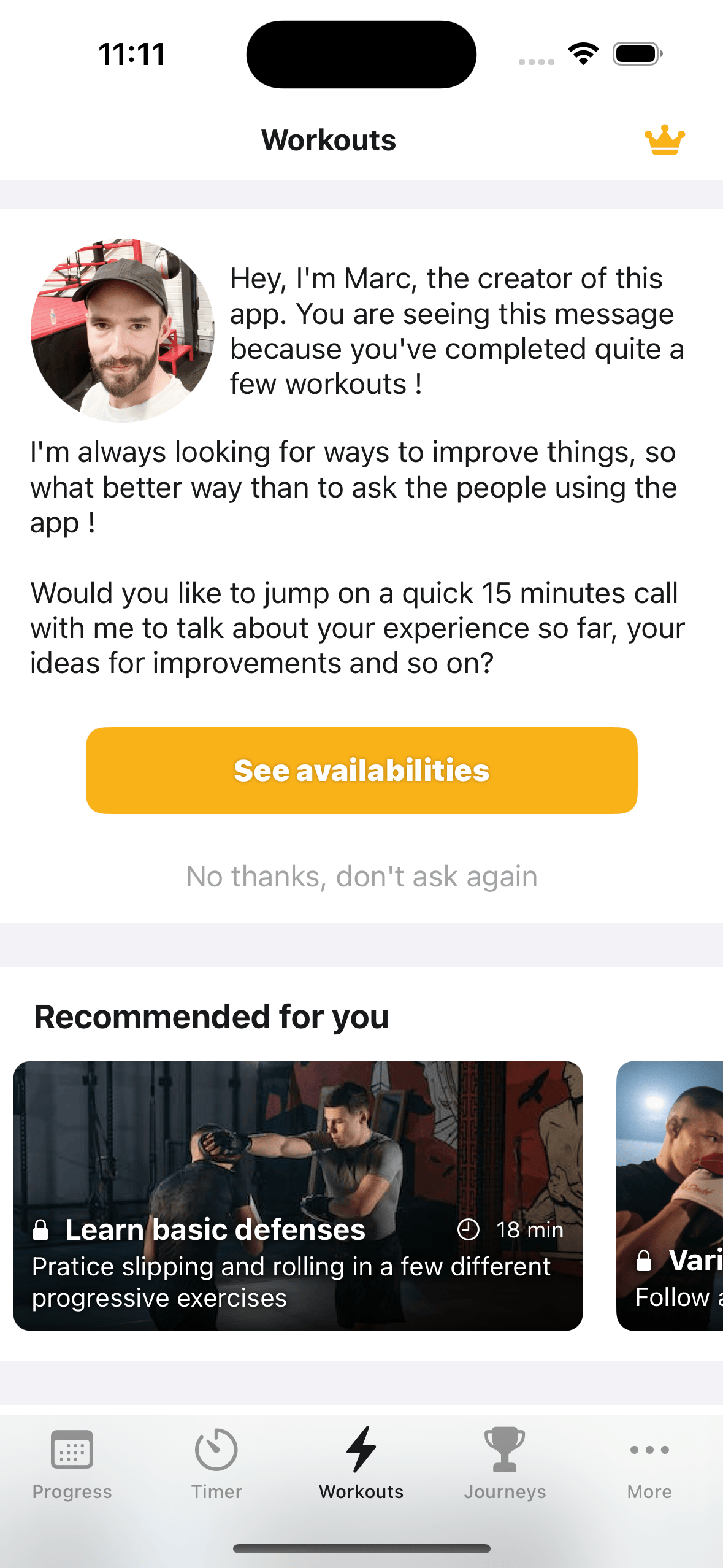Talking to your users is very important for many reasons and it’s been documented quite well. I’m personally always surprised by the kind of feedback I get and I stopped counting the number of times where I adjusted my roadmap based on user insights.
While building my app solo I tried many different ways to stay in touch with my users and I’ll share the most relevant in this article. If you have a user research team, this might not be relevant, but if you want to be scrappy feel free to try any of those options.
Provide a simple way to reach out
The first level is to give users a way to reach out and make it easy. If someone wants to tell me something, I want them to be able to without jumping through hoops. This is why the first thing I added to the app was my email. No need to fill a form, create an account… it’s just a direct way to contact me.
The interesting thing is that I’ve had long running discussion threads with some users who will reach out every few months with their new ideas for improvements.
Dedicated forms
After a while I also added dedicated forms to report bugs, share more guided feedback or ask for a feature.
I did this because some people are intimidated by how “open” an email can be or maybe they want the anonymity of a form compared to opening a discussion with me. It also helps to gather more negative feedback.

Thanks to providing those two options, I get both long and thorough emails about a change I’ve introduced in a new version, and single line survey results telling me to “add Fitbit support” or asking for “more kickboxing plz”!
Ask for feedback based on context
I would also push feedback prompts based on what someone recently experienced. This helps getting a more varied and precise array of answers as people will focus on what just happened to them and not the overall picture.
For instance after each workout I’ll ask how it went, which is a first level of insights. Depending on various conditions, I’ll then provide a followup question, often leading to a form or a way to contact me directly.

Another example is how I’ll push a feedback prompt after a certain number of workouts are completed.

Make myself available
In some cases I give direct access to my calendar to people. If you fit some conditions, you will be met with a personalised prompt and the ability to book a call with me. This one is a bit more intense than the other options, so I’m not pushing it too widely.

While costly, those calls are usually very insightful. Everyone I’ve talked to through this program has been very happy about the opportunity to have a real chat with the app’s creator. However I don’t plan too many calls like to preserve my time and have the time to address main feedback between sessions.
Best practices
There is endless content regarding how to gather feedback and conduct user interviews. Here I’ll just highlight a couple of things I feel are the most important when working with limited time and resources.
Don’t be spammy
Of course, to avoid spamming users with feedback prompts, I have a global way of tracking what I’ve asked you. This way if you just opted out of sending me insights, I won’t ask you again right away.
I didn’t do this at first, and the main feedback I used to get was to stop asking for feedback all the time!
Be open to all feedback
Some users have great ideas and voice them clearly. Others… not so much. Regardless of the kind of feedback you get, it’s important to listen and answer with a positive attitude. The user took some time to provide feedback, the least you can do is listen.
Seek the underlying problem
It’s also worth asking followup questions to find the underlying problem. Someone might ask for a new button on the home screen, but what they really want to share is that their favorite feature is buried under many menus and hard to access.
Follow up
If someone took the time to contact me, I’ll make sure to answer to the best of my ability.
If it’s a feature request, I’ll try to understand what they want and give a sense of whether I’ll build it or not. If it’s a bug report, I’ll make sure to be apologetic and thankful for the time they took to help me fix the problem. Then, once the bug is fixed or the feature is built, I’ll send a followup email notifying them.
This feels like the right thing to do, and I like to think that users appreciate this. It also opens the door to more interactions and insights.
Since you scrolled this far, you might be interested in some other things I wrote:
- My Experience with Liquid Glass so Far
- Building an App to Find Highway Stops
- Sometimes Details Are Everything
- LLMO: SEO in the Age of AI?
- Breaking the Routine with a Quick App
- Remove That Feature
- Minimum Viable Content
- Don't Forget to Improve your MVP
- Building, Releasing and Marketing an iOS Fitness App
- Startup & Tech Book Reviews